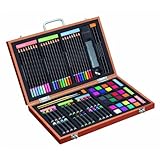|
The following suggestions are a jumping off place for a myriad of lesson plans around the question, “Who Am I?”
You can tailor the ideas to fit your special situation: elementary age through adult learner and the areas of art, social studies, writing, science lessons.
Do a self portrait (check out the Creative Process recommendations of these drawing books) and add a personal quote.
- Try this at the beginning of the school year and again at the end.
- Perhaps you could pass the self portraits (or copies) to the student’s teacher for the next year as a means of introduction.
Look at how the artist Frank Szasz painted the face of Einstein. Discuss full face and 3/4 portraits. Use other portraits like Mona Lisa to compare artist styles and techniques.
Visit your local art museum to look at portraits from different eras of history. -Pick up postcards of portraits for a mini-gallery or go to the Educational Posters Index page.
Consider the quote, “Imagination is more important than knowledge.” How did Einstein use imagination? What do you know about Einstein from this portrait and his quote? Write a short story about Einstein as a child.
Einstein Links for Learning
Imagine your classroom, grade level or entire school doing a program based on the study of positive role models. Many people enjoy “reenactor” events; students could become so familiar with an individual they could portray them on stage, in a dialogue with one another, and the audience. (Look at the Mark Twain portrayal by actor Hal Holbrook.) What would Gandhi and Martin Luther King, Jr. say to one another about non-violence? (MLK Quotes on Gandhi)
Each Global PathMarker section has links to learning more about that individual. Click on individual in gallery at top of page to go to that individual.
All of the suggestions can be adapted for each of the PathMarkers.
Drawing in science class?!? The discipline of drawing is an excellent way to learn to observe details. Studying the shape of the skull, placement of eyes, nose and mouth can lead to discussions on how humans use their eyes, nose and mouth. How do other animals use their noses, eyes, ears? Transfer these ideas to studies of skeletons, plants, etc.
|









